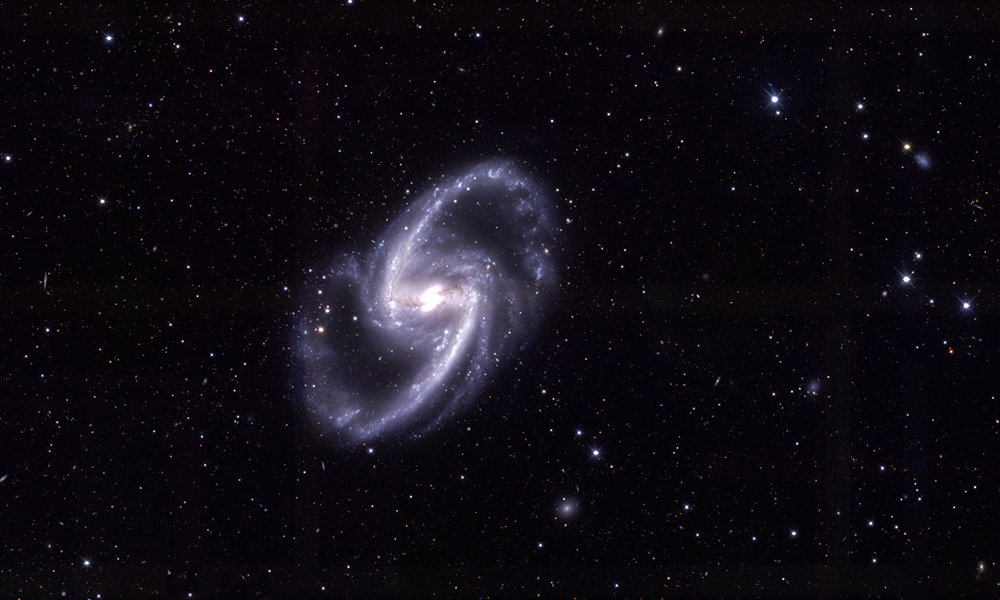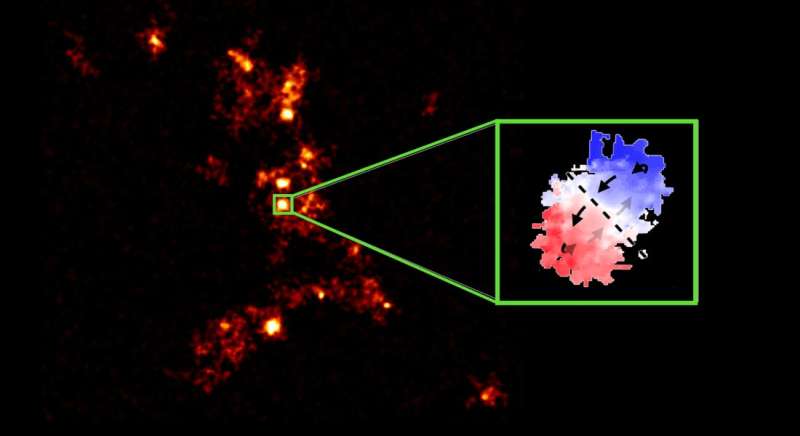Astronomers have studied an extremely bright galaxy that is 12 billion light-years away from us. There is a lot of hot dust in it and in the future it may turn into a quasar. In addition, other star systems orbit around it.

How are quasars born?
Astronomers decided to find out how quasars are formed from ordinary galaxies. Supermassive black holes in the center of these monsters absorb gas and dust, emit jets at speeds close to light and emit a lot of radiation.
In order to understand where it all starts, scientists studied the galaxy W0410-0913. It is located at a distance of 12 billion light-years from us, that is, we see it as it was a little less than 2 billion years after the formation of the Universe.
Despite this, W0410-0913 is already ten times more massive than the Milky Way and extremely bright. It belongs to the class of galaxies covered with hot dust, also called “hot DOGs”. There is indeed a lot of heated gas in them, blocking infrared radiation, causing active star formation, but for the most part it still falls on a supermassive black hole.
It is from such objects that quasars are believed to be formed. But their evolution is impossible without a certain environment that determines the further path of transformation. So, the researchers used a Very large telescope (VLT) in Chile, which allows observing an area in the sky 40 times larger than the galaxy itself.
Swarm of galaxies
Especially valuable when working with VLT is that it includes the MUSE tool, which allows to determine the distance to an object using spectrum analysis. Thanks to it, the researchers were able to obtain a 3D image of 24 small galaxies orbiting W0410-0913 at close range.
This swarm of galaxies did not surprise the researchers. They expected quasars to be born in dense stellar environments. Moreover, these environments should look like the wreckage of a car crash, full of pieces of gas and dust clouds and star clusters in complete chaos.

In order to verify this, astronomers used an array of ALMA antennas and examined W0410-0913 and the swarm of galaxies that surround it in the radio range. And they found that no chaos was happening. Gas and dust do indeed orbit the supermassive black hole at the center of the “hot dog”, but no catastrophic collisions occur.
All this indicates that the birth of quasars really occurs with close intergalactic interaction. A swarm of galaxies plays the role of a gas source for turning a supermassive black hole into the brightest object in the Universe. But this happens without disastrous consequences for them.
According to phys.org
Follow us on Twitter to get the most interesting space news in time
https://twitter.com/ust_magazine

